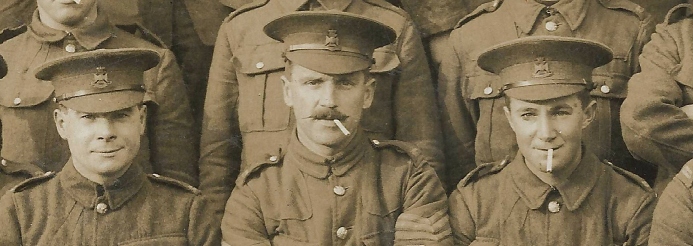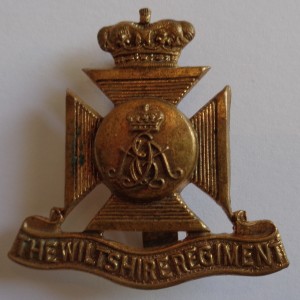Postcards

Vintage postcards are an invaluable visual resource for investigating First World War sites, structures and events; helping to identify the location of sites such as Training Camps, National Factories, Training Areas and Hospitals, as well as buildings hit by bombs during air raids. Often they show sites ‘as they were’ allowing us to gain an insight into the scale and function of sites and also allowing us to ‘rediscover’ lost sites and forgotten events.
Postcards were a common form of communication during the war and many would send postcards home to their relatives. These postcards often showed the camps the soldiers were accommodated, the areas in which they trained and also the hospitals they were sent to when injured. Local professional photographers would often be hired to take the photographs and create personalised postcards.
Location

Rugely Camp © Wayne Cocroft
Tracing the location shown on a vintage postcard can be straightforward. Often they are clearly annotated or describe the location shown.
If the location isn’t given then all hope is not lost. It is still possible to identify the area shown in the photograph, there are a number of effective ways this can be accomplished.
Start by identifying prominent buildings and landmarks shown within the image; such as churches, pubs, hills, roads and rivers.
Historic maps, used in conjunction with postcards, can prove rewarding. Enabling you to highlight areas for further investigation on the ground, during the field recording phase.
Soldiers
Postcards that show soldiers in uniform, within camps or during training, are a strong reminder of the individuals who fought during the war, showing groups of soldiers prior to deployment.
They are also another great way of tracing First World War training camps and training areas. The insignia of soldiers present in a photograph, in particular their cap badges and shoulder titles, can help you to identify the regiment they belonged to. Tying this information in with further research can lead to the identification of the site within the photograph.
The postcard image below shows a group of twenty soldiers, outside a typical First World War Accommodation Hut, most likely while training somewhere in the UK. Note that most are wearing the 1902 Service Dress uniform, while some are wearing the simplified 1905 Service Dress uniform, which removed the pocket pleats and shoulder patches to speed up production.
The postcard doesn’t state the location or the regiment the soldiers belonged to.
- A group of soldiers outside of their Accommodation Hut while in camp. © Chris Kolonko
Taking a closer look at the Cap Badges worn by the soldiers reveals a distinctive type of cap badge. With a little more research, this badge can be identified. Military Insignia forums and websites are a good place to start when identifying insignia.
Close up of the Sergeant © Chris Kolonko
The badge turns out to be that of The Wiltshire Regiment.
Wiltshire Regiment Cap Badge © Chris Kolonko
Having identified the regiment within the photograph the next step will be to research the movements of this regiment, within the UK, during the First World War. Specialist internet websites/forums, archives, and regimental War Diaries are a source for this information.
Forgotten Events

© Wayne Cocroft
Air raids conducted by Zeppelins are a popular postcard theme and often highlight notable raids, buildings hit by bombs and the destruction of Zeppelins.
“I found this postcard of the First Zeppelin raid on London inside a second hand book. I found out later that this raid caused more casualties than any other offensive.”
Wayne Cocroft , Senior Archaeological Investigator, Historic England
Online auction sites, collectors fairs and antiques shops are a good source of postcards and many can be bought fairly cheaply.





